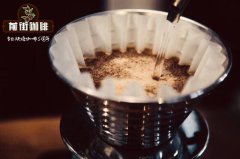What are the characteristics of Guatemalan coffee beans elegant and lively fruit acid

Professional coffee knowledge exchange more coffee bean information please follow the coffee workshop (Wechat official account cafe_style)
Front Street-introduction to Guatemalan Coffee
In the long history of Guatemala, Mayan culture flourished for a time. The territory is located in large-scale agricultural gardens to small-scale farmers, including many agricultural gardens with a long history. In the 1750s, Jesuit priests brought coffee to Guatemala, and it was only after independence from the Spanish colonies and a wave of immigrants from Germany that coffee trees were officially planted in Guatemala in 1812.
The geographical feature of Guatemala lies in its rich diversity on both sides facing the Atlantic and Pacific oceans, as well as lakes, Mexican plains and alpine areas. Agricultural gardens all over the country make good use of the surrounding environment to develop unique coffee cultivation.
Guatemala's extremely hard beans are famous for their elegant, sour, clean, well-structured, as well as sour apples, berries, jasmine, orange peel, green pepper, sweet and sour fruit, sweet chocolate, and even smoky aftertaste.
Such a rich regional flavor should be related to the soil and water in the eight major producing areas of the dangerous country. Among them, the five producing areas of Antigua, Ekat Nango Valley, Attilan, St. Mark and Huaiqiang belong to volcanic geology. In addition, Vivetta Nanguo, Koban and New Oriental producing areas belong to the climate of non-volcanic highlands or tropical rain forests. Guatemala is home to more than 300 microclimates, making it the largest in the world.
Variety Kind
Most of the Arabica species here are bourbon species.
Most of the Arabica coffee is produced here, most of which are bourbon, leaving only a few Tybika seeds. In addition, there are small Kaddura or Kaduai species, which have also been actively planted in recent years.
Distinguish different quality grades according to altitude
In areas with higher elevations, coffee is highly valued for its sour taste and strong feeling, while in lower areas, it is not sour or strong, so the farms have moved to the highlands one after another. Among the grades set by altitude, the highest grade is called "Strictly Hard Bean".
Knowledge: Guatemalan coffee beans are mostly cultivated in high-altitude volcanic soils belonging to the most advanced Arabica (Arabica) varieties.
In short: Qianjie is a coffee research hall, happy to share the knowledge about coffee with you, we share unreservedly just to make more friends fall in love with coffee, and there will be three low-discount coffee activities every month. The reason is that Qianjie wants to make more friends drink the best coffee at the lowest price, which has been Qianjie's tenet for 6 years!
END
Important Notice :
前街咖啡 FrontStreet Coffee has moved to new addredd:
FrontStreet Coffee Address: 315,Donghua East Road,GuangZhou
Tel:020 38364473
- Prev

What are the characteristics of washed Bolivian coffee introduction to the flavor and taste of Bolivian cocoa sun-cured coffee beans
Professional coffee knowledge exchange more coffee bean information please follow the coffee workshop (Wechat official account cafe_style) front street-Bolivian coffee introduces them to help coffee farmers master better planting techniques; they help coffee farmers use better machines and equipment; they educate growers about social responsibility and economics.
- Next

Guatemala coffee beans story Guatemala Olympic special coffee beans characteristics intoxicating wine rhyme
Professional coffee knowledge exchange More coffee bean information Please pay attention to coffee workshop (Weixin Official Accounts cafe_style) Front Street-Guatemala New Oriental Wine Fragrance Oriente Introduction (1) Different from the past Guatemala will wash good beans, poor quality raw beans for sun treatment. This section of raw beans is strictly selected red ripe fruit, carefully selected after the production of high-end sun beans.(2
Related
- Beginners will see the "Coffee pull flower" guide!
- What is the difference between ice blog purified milk and ordinary milk coffee?
- Why is the Philippines the largest producer of crops in Liberia?
- For coffee extraction, should the fine powder be retained?
- How does extracted espresso fill pressed powder? How much strength does it take to press the powder?
- How to make jasmine cold extract coffee? Is the jasmine + latte good?
- Will this little toy really make the coffee taste better? How does Lily Drip affect coffee extraction?
- Will the action of slapping the filter cup also affect coffee extraction?
- What's the difference between powder-to-water ratio and powder-to-liquid ratio?
- What is the Ethiopian local species? What does it have to do with Heirloom native species?

